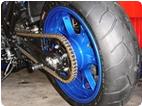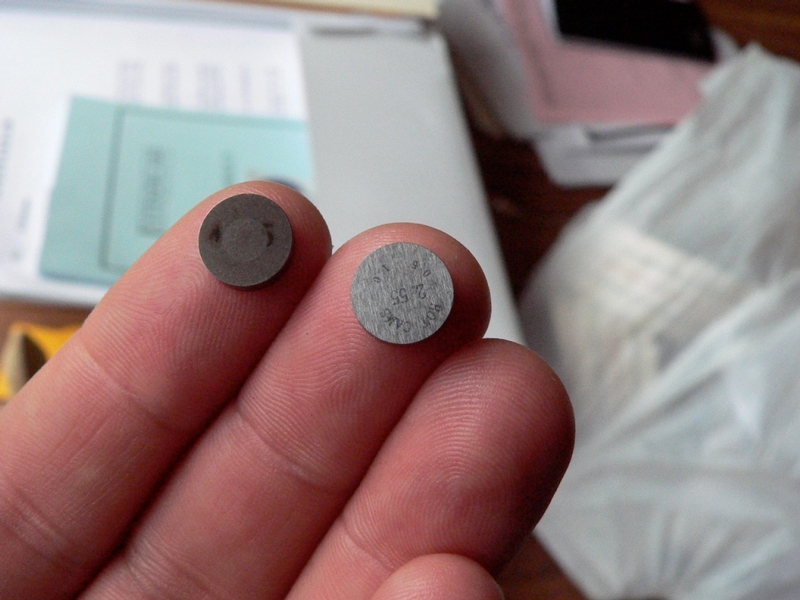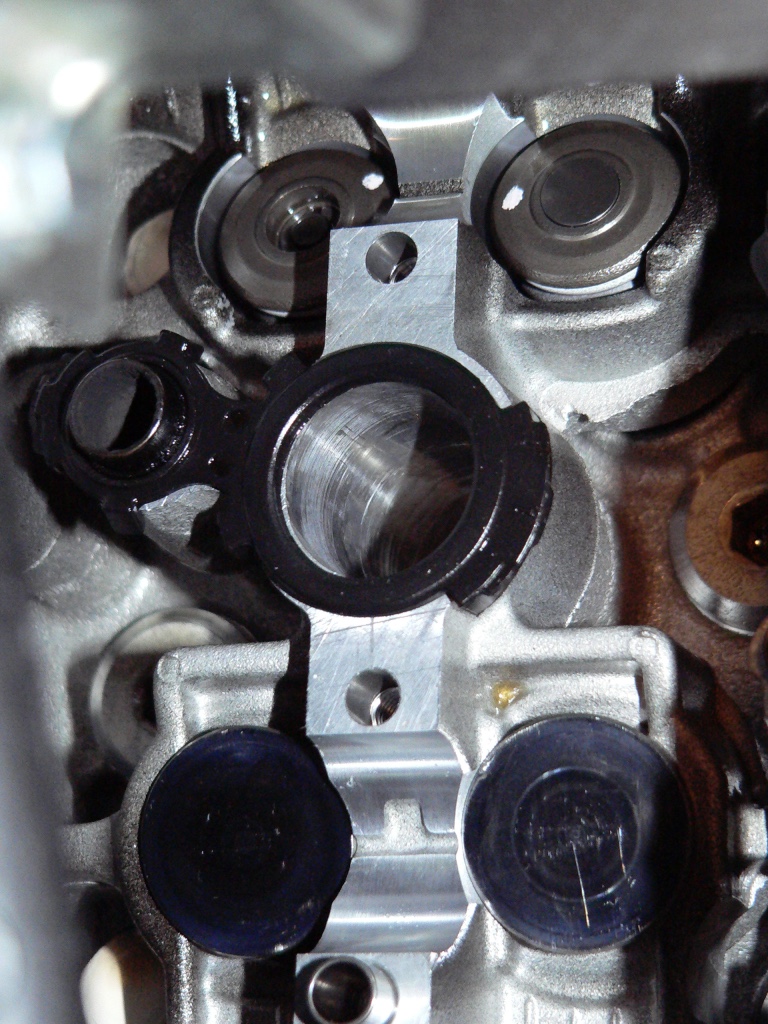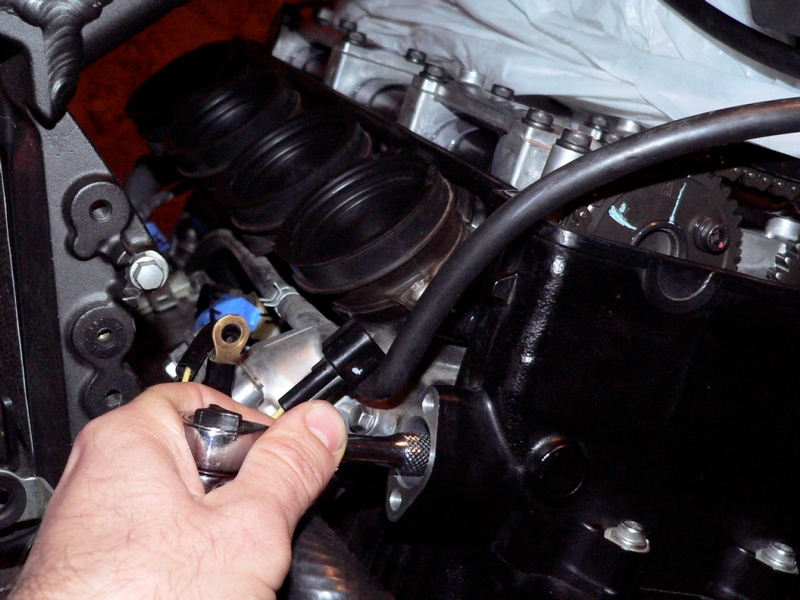Valve Clearance Check and Adjustment, Gen 1
Introductory Notes
Time and Cost
Before committing to doing your own valve clearance check, be aware that it will probably require at least a few full days if you do not have a great deal of wrenching experience. Further, the valve clearance check may determine the need for adjustments of the clearances and that will double the amount of work. There are some short cuts that you might take but this is not something to expect to get done in a weekend. I think a safe estimate for the check and the adjustment is 30 to 60 hours for a novice.
The disassembly of the parts presents quite a few opportunities to execute other maintenance jobs. If you choose to do some or all of these, that will require additional time.
The cost of replacement parts is approximately $130. The tools required to do the job (other than the common ones you may already own) will cost about 30 dollars.
Work Environment Requirements
It is not advisable to measure the valve clearance in an environment that is colder than room temperature. If the work space is not heated it will probably be best to choose a time of year when the weather is mild to warm. Keep in mind that the project could take several weeks if you are not able to devote a large percentage of your time to it.
The engine will need to be open for part of the time while the job is in progress. It should be protected with dust covers but it will still be best to do the work somewhere that is as clean as possible and will not have dust getting stirred up.
Engine Configuration
The four cylinders/pistons are named #1, #2, #3, and #4. They are in numeric order from #1 on the left (clutch lever) side of the bike to #4 on the right (front brake lever ) side of the bike. Each cylinder has two inlet valves and two exhaust valves. In this tutorial, I refer to the inlet valves as Left Inlet Valve and Right Inlet Valve. The Exhaust valves are referred to in the same way, Right and Left. The exhaust valves are arranged in a row toward the front of the motor where the exhaust system starts. The inlet valves are the row toward the back of the motor where the four intakes come down to the engine.
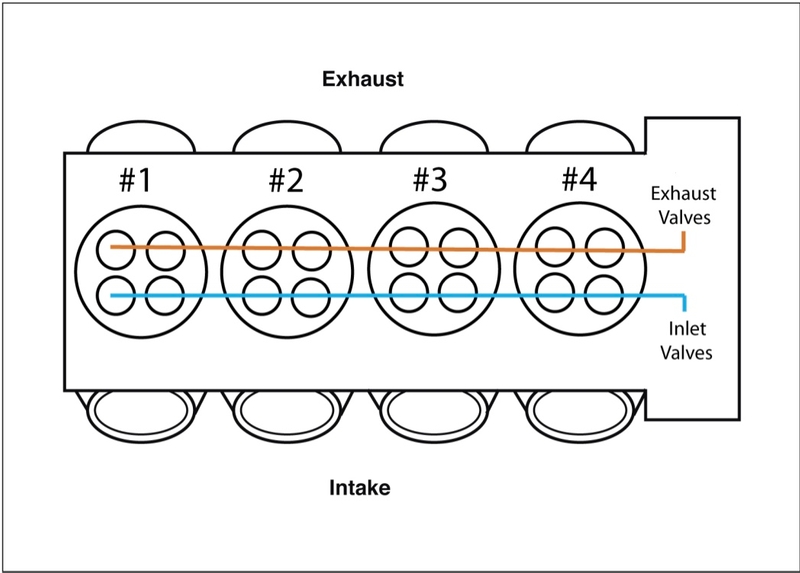
The crankshaft [C] at the bottom of the motor is driven by the pistons. The Crankshaft turns the camshafts by a system of sprockets and a chain. There is a camshaft [A] for all of the exhaust valves and a separate camshaft [B] for all of the inlet valves.
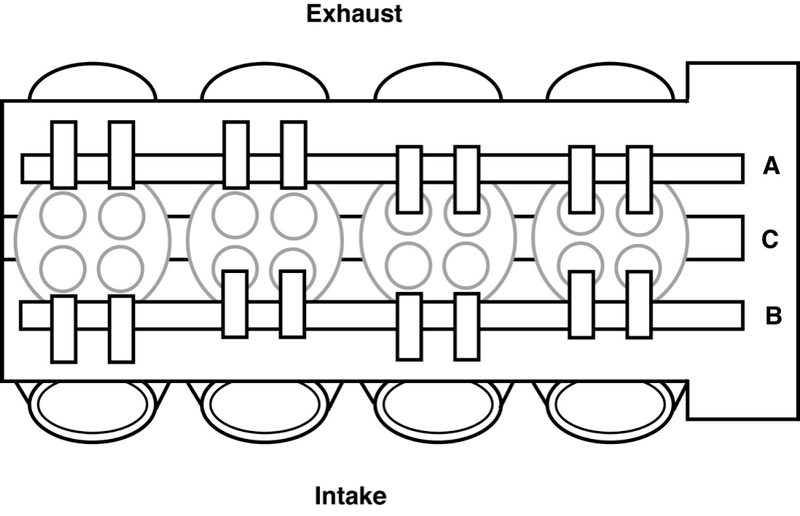
Camshaft, Lifter, Shim, Valve, Cylinder
The cams on each camshaft are egg shaped wheels. There is one cam that controls each lifter. There is a lifter above each valve and a shim between the lifter and the valve. As the camshaft turns, the high spot (the lobe) of the cam comes around and presses the lifter down. This pushes the shim and the valve stem down the guide and the valve moves farther from its seat which allows a space for fuel and air to enter the cylinder (inlet valves) or a space for exhaust to be expelled from the cylinder (exhaust valves). The valve returns to its seat under the tension of a spring after the cam lobe passes across the lifter.
Cause of Valve Clearance Change
Over time, the adjoining surfaces of the valves and the valve seats wear. This allows the the valve to rest deeper into the valve seat which in turn, allows the tip of the valve stem to slide farther up the guide. The shim at the top of the guide gets pushed higher which pushes the lifter higher. Because the lifter is riding higher, the tiny space (the valve clearance) between the top of the lifter and the cam is reduced. There are different optimum clearances for a few different types of engine applications. Some are smaller (tighter) than others. If the valve clearance is insufficient, the valves will eventually burn from having too close of contact between parts or parts will impact. Catastrophic engine failure would be the result in either case.
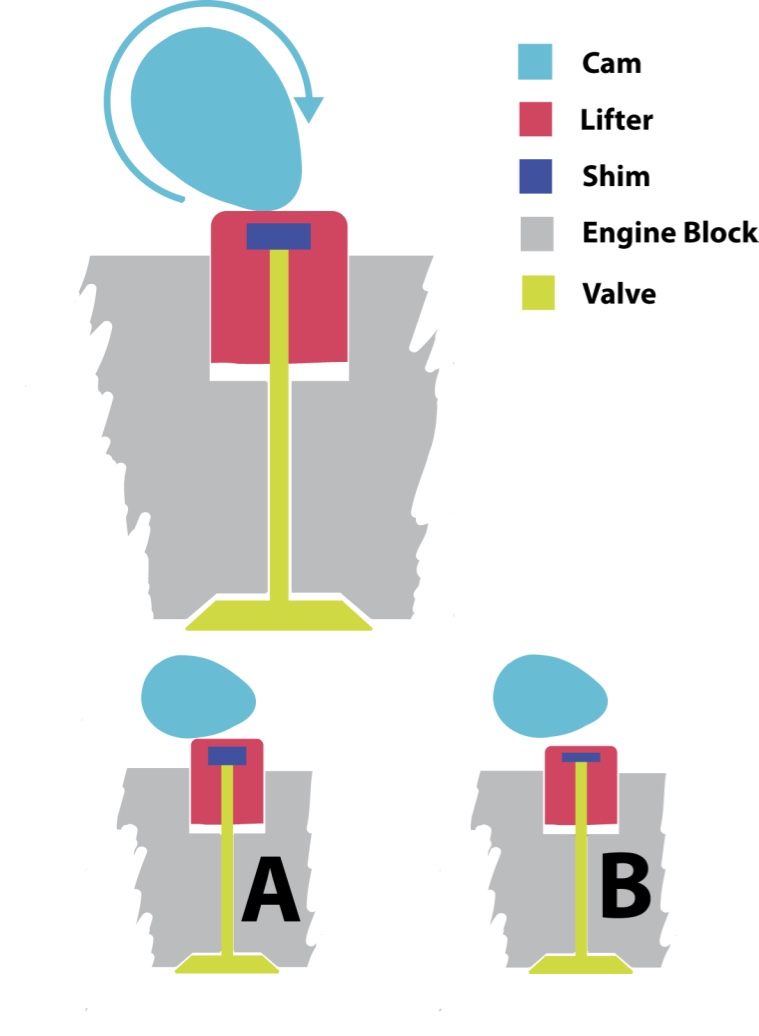
To clearly illustrate the point, the diagrams above exaggerate the size relationships between the shim, lifter and cam.
Diagram A shows a valve shim that is too thick and causes the lifter to be raised too close to the cam. It would be impossible to slide a feeler gauge blade of the smallest specced clearance between the lifter and the cam. The valve clearance is too tight.
In diagram B, the thick shim has been replaced with a thinner shim. The lifter does not ride as high atop the thinner shim. The valve clearance has been adjusted looser (larger). It is now easy to slide an appropriate feeler gauge blade between the cam and the lifter.
Top Dead Center
As you can understand, the valves travel up and down to open and close. Half of the valves are completely closed when the piston in cylinder #1 has turned to the highest point of its compression stroke. This is known as Top Dead Center (TDC) of the Compression Stroke of Cylinder #1. That is where we check the clearances of all eight of the closed valves to determine if they are in spec. The other half of the valve clearances will be checked at the Top Dead Center of the compression stroke of Cylinder #4 (TDC Cylinder #4)
In order to check valve clearance, you will need to turn your motor to Cylinder #1 TDC and also Cylinder #4 TDC. When turning the motor, it is very important that you only turn it forward. The motor should be turned clockwise as viewed when looking at the right side of the bike. This is the direction that would turn the rear wheel so that it propels the bike forward. DO NOT EVER TURN THE MOTOR BACKWARD!! The engine timing could be disrupted and cause engine failure when the engine is started.
Adjusting Valve Shims for Performance Goals
There is a range of safe clearances for the valves. The range for valve clearance is as follows.
Exhaust 0.22 ~ 0.27 mm (0.0087 ~ 0.0106 in.)
Inlet 0.15 ~ 0.20 mm (0.0059 ~ 0.0079 in.)
The rule to adjusting valve clearance is to always adjust to looser spec rather than tighter when a choice or a judgement presents itself. The reason is that valve clearance will always get tighter over time as the valves wear. The valves may make more noise when they are adjusted loose but the noise will reduce as the clearance gets tighter. Also, a safe clearance will be maintained for a longer period of time if the clearance starts out looser.
Generally, it is best to aim at adjusting your valve clearances to the middle of the spec range. That way, if the measurements to do the adjustment were off a little bit (which can happen even if you are very careful), the clearance will most likely still be somewhere in the specced range of clearances. If any clearance is not in spec after the adjustments are made, it will need to be immediately readjusted which means ordering a new shim and tearing down the cylinder head a second time.
One approach to optimizing performance through valve clearance adjustments is to adjust all valves to minimum spec. Tighter valve clearances will produce a quieter running motor and also reduce the possibility of a shim flying out of place (spitting) during severe operation of the engine. In adjusting to the smallest specced clearance, you are not allowing any margin of error in adjusting too tight (If you adjust tighter than minimum spec, the adjustment is out of spec). Very careful calculations need to be made. Obviously the valve clearance will need to be done sooner and more often if the clearance is set tighter to begin with.
Valves may be adjusted to increase the length of time of combustion. The idea being that the fuel burns more completely and produces more power. The Inlet valve clearance is adjusted to minimum spec so that the intake happens as soon as possible. The exhaust valves are adjusted to maximum spec so that they open as late as possible. In this way, the amount of time for the fuel to burn completely is optimized. Also, pressure from expansion of combustion gases drives the piston down for the maximal length of time before the gases are expelleded. The length of time that the fuel burns is of course increased by a very small fraction of a second but if power output needs to be optimized even to the smallest degree, this can be an appropriate part of engine tuning.
Metric and Standard Measurements
Feeler gauges and micrometers are often marked in inch decimals and the millimeter equivalent. Shims are only marked in millimeters so it is necessary to convert all measurements to millimeters if metric tools are not used. Since there is already some mathematical calculations to make, it simplifies the process to avoid the extra steps in converting inches to millimeters. Errors can be avoided by using tools that are calibrated with millimeter increments.
In spite of the complication of converting inch decimals to millimeters, many mechanics find it easier to conceptualize and compare the valve clearances by thinking of them in terms of inch decimals.
The clearance spec for inlet valves is .0059 in ~ .0079 in and this conveniently rounds to .006 in ~ .008 in. The same is true for exhaust valves spec range which is .0087 in ~ .0106 in. This rounds to .009 in ~ .011 in. These decimals seem neater than their metric equivalents but conversion of the metric labeled shims will be required if the clearances were measured in standard.
I found this website handy for converting my measurements from standard to metric.
Tools
Feeler gauges
The feeler gauge is used to measure the valve clearance (distance between the cams and the lifter). Look for a feeler gauge that has the following sized blades + a few smaller and perhaps several more that are larger: .014” .013” .012” .011” .010” .009” .008” .007” .006” .005” .004” .003” .002” .001” For accurate measuring, It is important that the tapes be graduated in increments of one one thousandth of an inch or less. It would be best if the tapes were marked in millimeter as well as inch decimal equivalents.
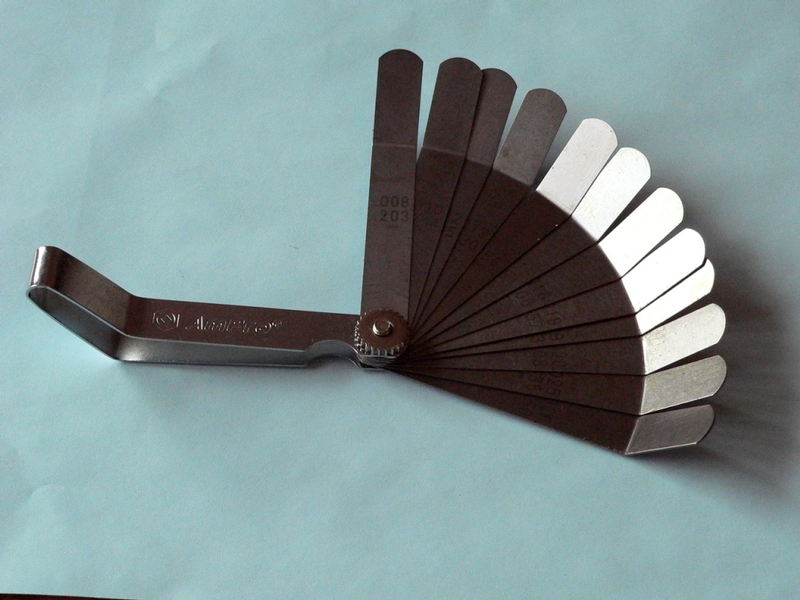
A feeler gauge with a 45 degree bend in each tape makes reaching between the cam and lifter in the the engine head easy. However, the 45 degree gauges usually do not contain a large selection of blades. Most of the blades in the 45 degree feeler gauge pictured above are too big to be of any use in checking valve clearance on a motorcycle.
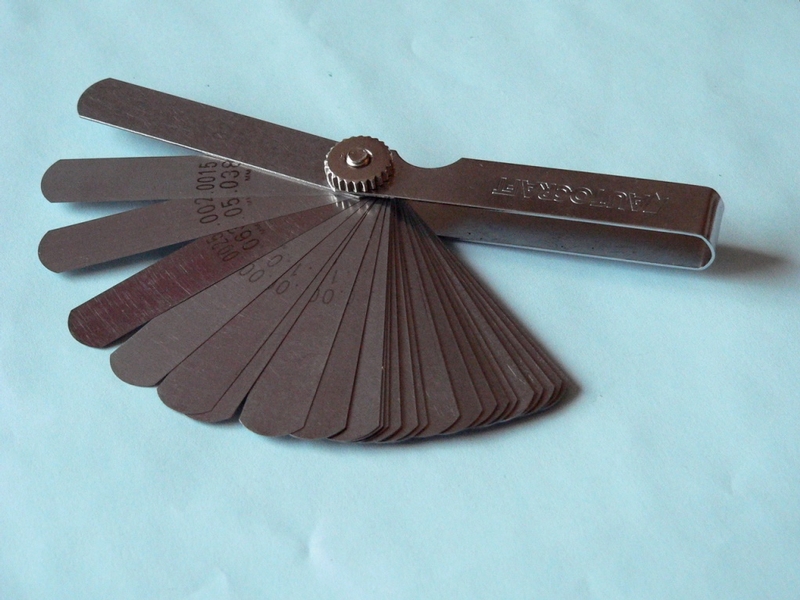
The flat feeler usually has more blades and it usually has mostly the thinner blades which are the most useful in measuring valve clearances. It is possible to reach the flat blades to the space between the cam and lifter because the smaller blades below .012” bend easily and spring back into shape.
Micrometer
A standard unit micrometer with a flat anvil can be used but it will be necessary to convert the measurements to metric when measuring shim thicknesses. It will be easier to use a micrometer that is marked in millimeter decimals.
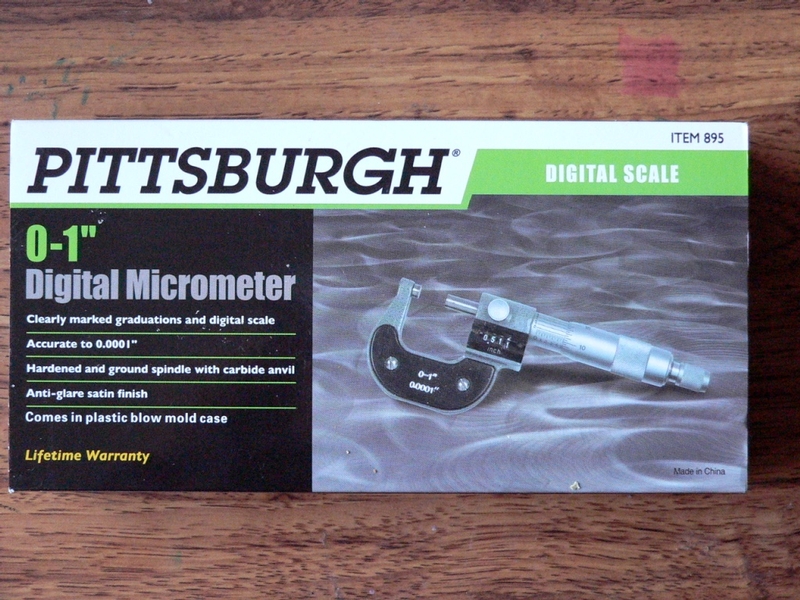
I purchased the micrometer shown above at Harbor Freight for $17 and it has proven to be very accurate checked against the tapes in my feeler gauges. For a few dollars more, Harbor Freight has a Pittsburg micrometer that has an LCD digital display that will show inch decimals or millimeters.
Valve Clearance Measurement
Do First:
Remove Fuel Tank
Remove Throttle Body Assembly (optional but recommended)
Remove Engine Heat Insulator Rubber Plate
Remove Engine Head Cover
Remove Crankshaft Sensor Cover and Position Crankshaft at Top Dead Center, Cylinder #1 (See Crankshaft Sensor, steps 1-3 also steps 1-3 below)
Tools:
17mm socket
valve clearance feeler gauge
diagram/record sheet for valve clearances
1. Use a 17mm socket to align the 1.4 T and the 2.3 T marks up with the marks on the edge of the engine case (Photo A). If you turn the rotor past the point where the marks line up, do not turn the wheel backward (counterclockwise). Instead, continue turning the motor clockwise 360 degrees to come back to where the marks on the case and the wheel line up.
Photo A
TDC #1
timing wheel, TDC marks lined up with engine case marks?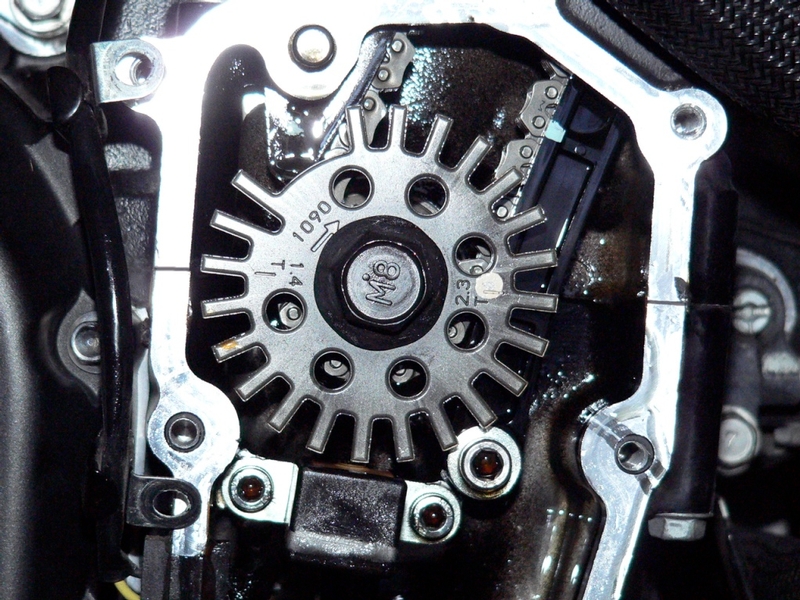
2. Inspect the cams on the extreme left (clutch lever) side of the cam shafts. The cam lobes should be pointed away from one another.
Photo B
TDC #1
cam lobes on extreme left, point away from one another 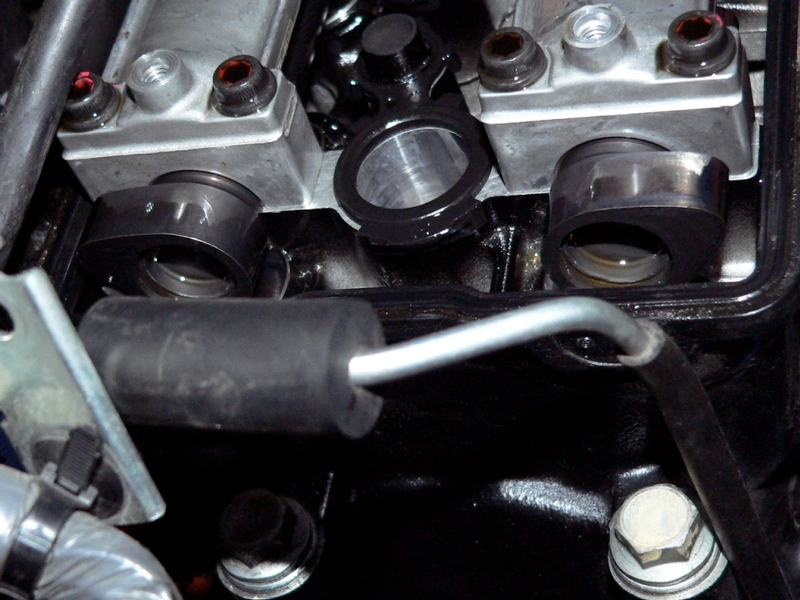
The cam lobes on the extreme right (brake lever side) should be pointed toward one another.
Photo C
TDC #1
cam lobes on extreme right point toward one another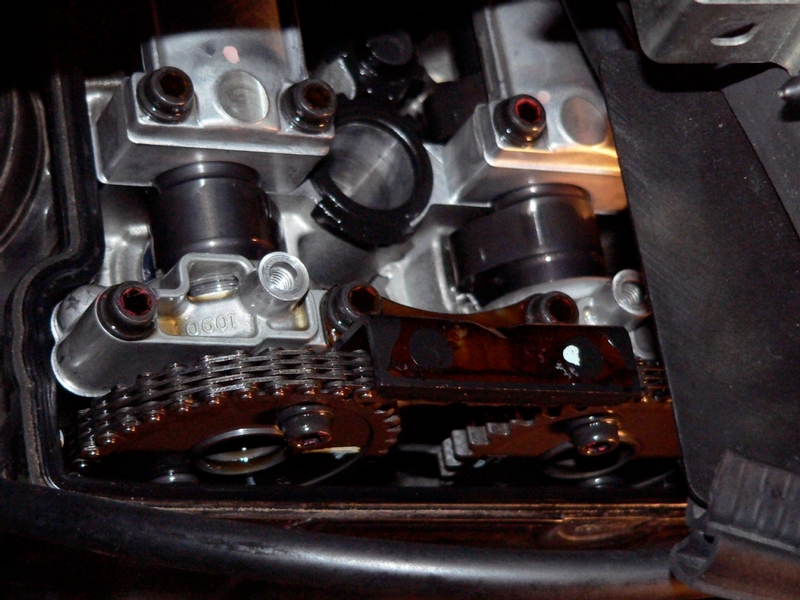
If the the timing wheel has been positioned as shown in photo A but the cam lobes are pointed in the opposite directions that are shown in Photo B and Photo C, cylinder #4 is at TDC of the compression stroke. Turn the timing wheel 360 degrees. That will put cylinder #1 at TDC of the compression stroke and the cam lobes and timing sprockets will be positioned as described and shown in photo B and photo C.
3. When Cylinder #1 is positioned at TDC of the end of the compression stroke, the timing sprockets will appear as shown in Photo D. The engine is now positioned properly to check the valve clearances of half of the valves.
Photo D
Cylinder #1 TDC
Two marks to the inside of the sprockets are in line with the top of the engine case. No other marks are visible.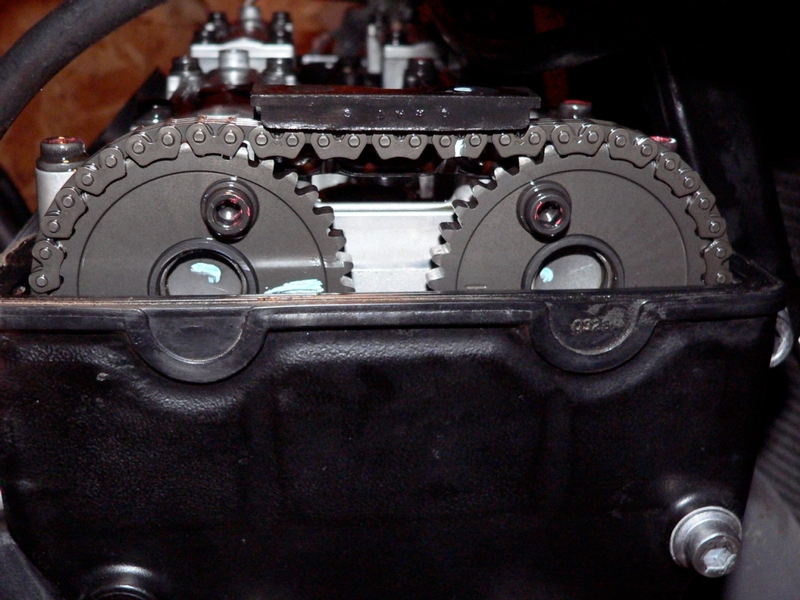
4. The valves marked solid black on the diagram below may have their clearance checked with cylinder #1 placed at TDC of the end of the compression stroke. These are all 4 valves of cylinder #1, both exhaust valves of cylinder #2 and both inlet valves of cylinder #3.
DIAGRAM 1 valve clearances to measure with Cylinder #1 at TDCCS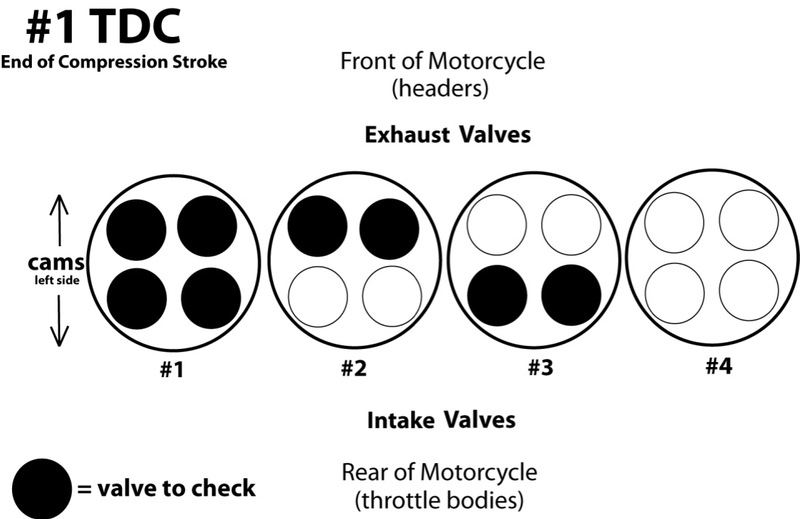
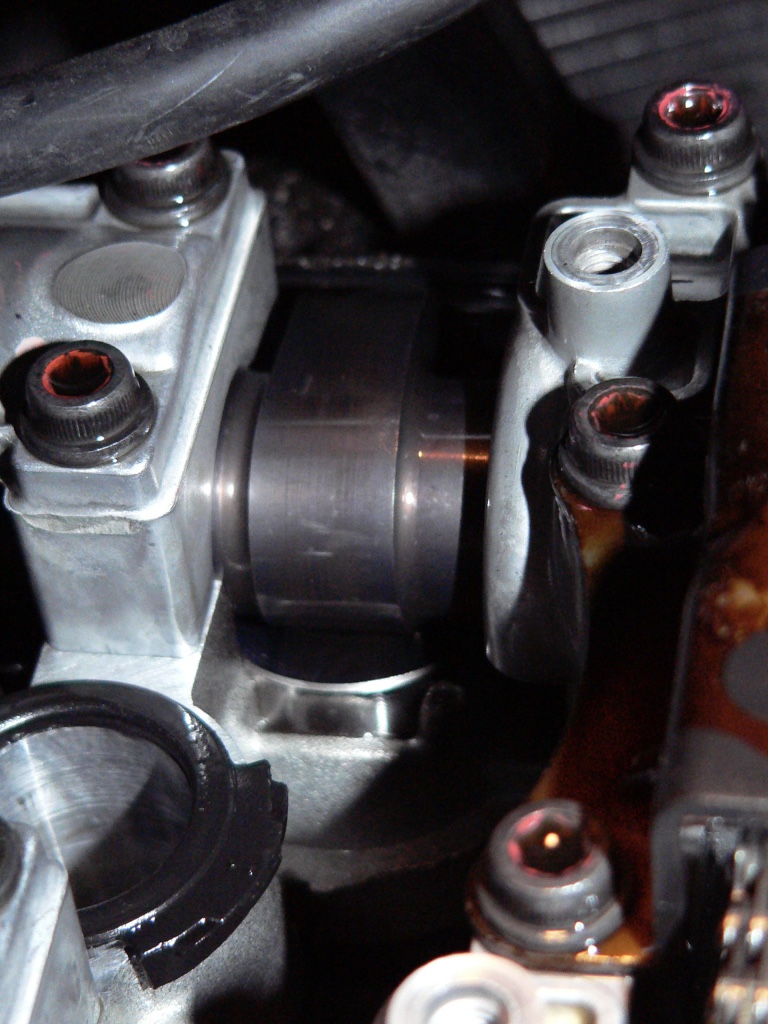
This photo shows a cam with a lifter (the small chromed cylinder) below it. The tiny space between the top of the lifter and the cam is what is measured with the feeler gauge.
5. The feeler gauge is inserted between the lifter and the cam.
spec valve clearance, inlet valves: .15 mm ~ .20 mm
spec valve clearance, exhaust valves: .22 mm ~ .27 mm
If the tape does not slide right in without resistance, it is too large. Try the next smaller tape. If the tape does fit, try the next larger one in the set to see if it will fit. Repeat the process until the largest tape in the set that fits without resistance is determined. Use the same procedure to measure all the valves indicated in the diagram. Do not force tapes between cams and lifters or the surface will become scratched.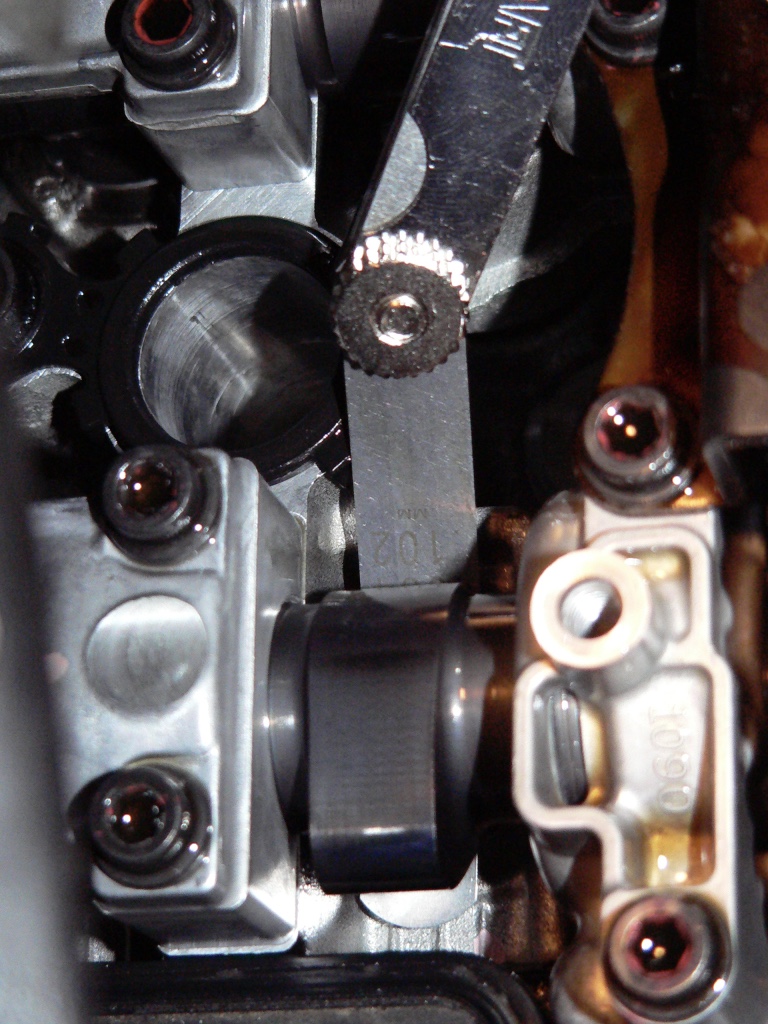
6. Record the valve clearance measured for each cylinder. Copy diagram 2 below (you will need one copy for each cylinder) or draw some diagrams similar to it. Keep the valve clearances and related information written in the proper positions and kept organized for future reference.
DIAGRAM 2 valve clearance measurement record
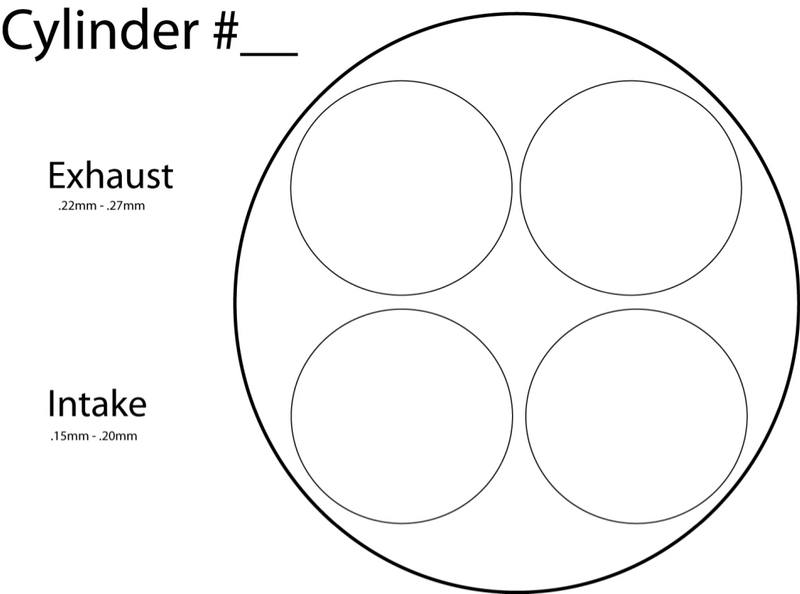
7. When all of the clearances with cylinder #1 at TDC have been measured and recorded, turn the timing rotor 360 degrees (see Crankshaft Sensor, steps 3-4) so that cylinder #4 will now be at TDC of the end of the compression stroke.
Photo E
Cylinder #4 TDC
The cam lobes on the extreme left will be pointed at one another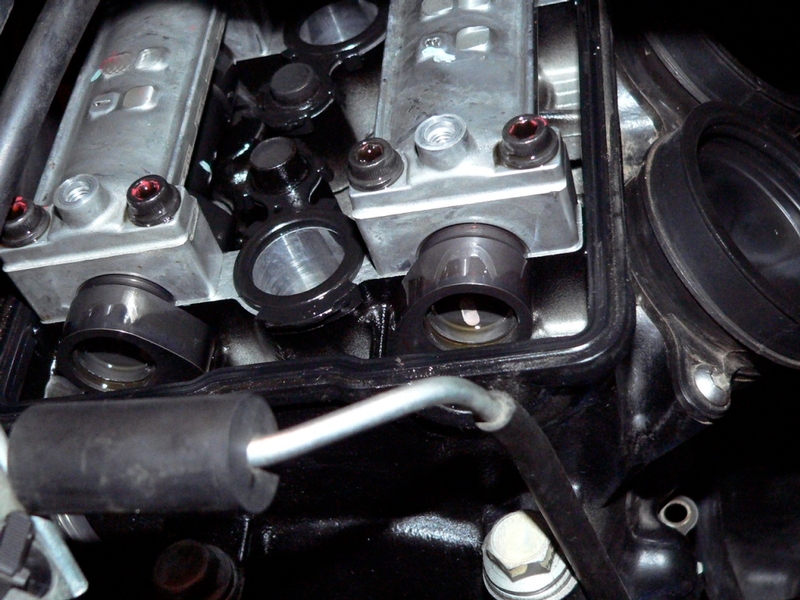
The timing rotor will be at the same position as it was in step 3 (the 1. 4 mark aligned with the mark on the edge of the engine case) However, the cams on the far left side of the motor will now be turned toward one another.
Photo F
Cylinder #4 TDC
The cam lobes on the far right side of the motor will be turned away from one another.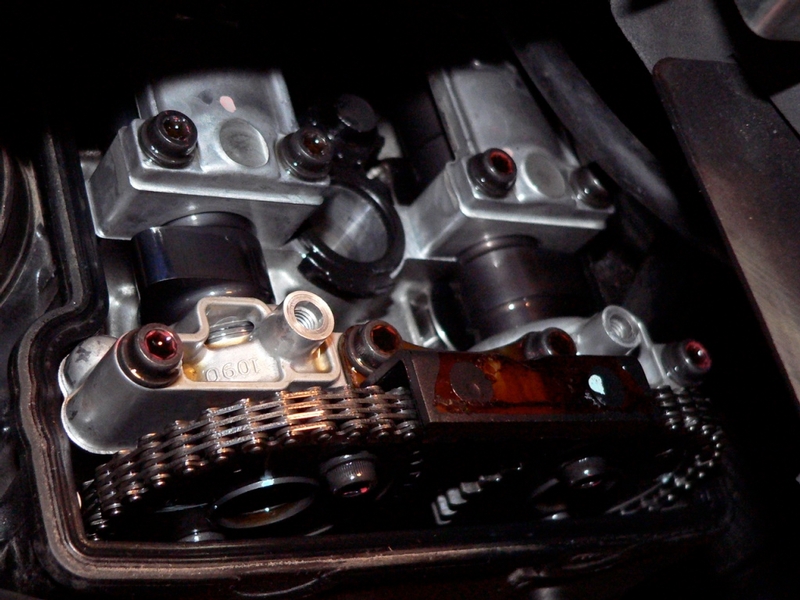
Photo G
Cylinder #4 TDC, Camshaft Sprockets
There is a mark parallel to the top edge of the engine case on the outside of each wheel. Also a mark on each sprocket approximately 45 degrees to the top edge of the engine case.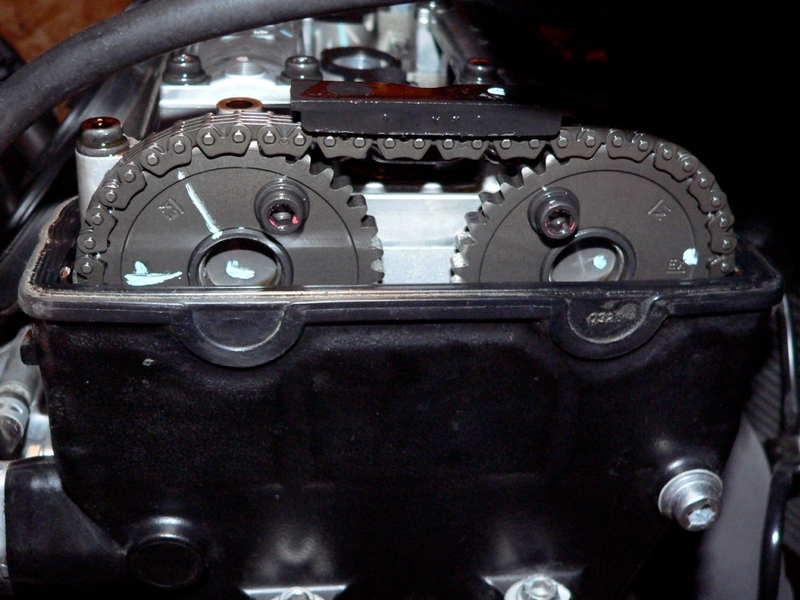
8. When cylinder #4 is at TDC of the compression stroke, the clearances for the valves shown in the diagram below may be measured and recorded as described in step 4. Measure the clearances of the two inlet valves of cylinder #2, the two exhaust valves of cylinder #3 and all four valves of cylinder #4. Use the same diagram (diagram 2) to record these clearances as was used to record the #1 TDC clearances.
DIAGRAM 3 valve clearances to measure with Cylinder #4 at TDCCS
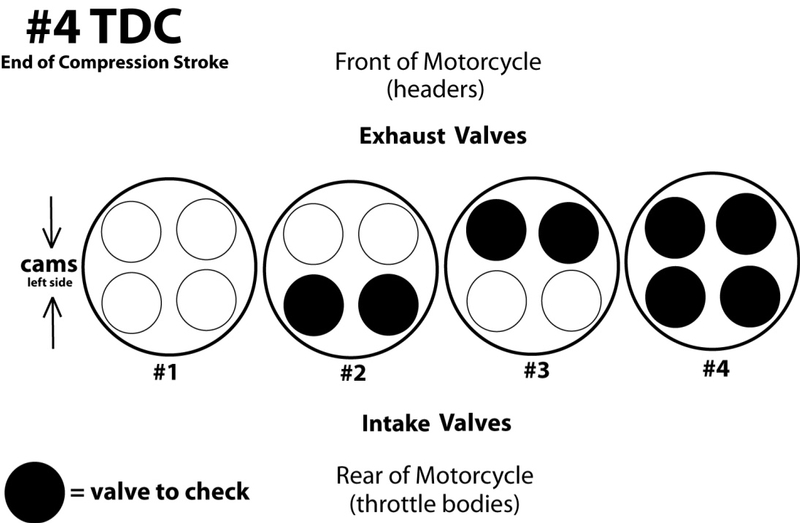
DIAGRAM 4 Valve Clearances Measured Before Adjustment

Above are the clearances recorded for my bike, checked past due at 29,000 miles. The clearances are expressed in millimeters. T indicates a tight clearance that should be adjusted.
DIAGRAM 5 Valve Clearances Expressed in Inch Decimals
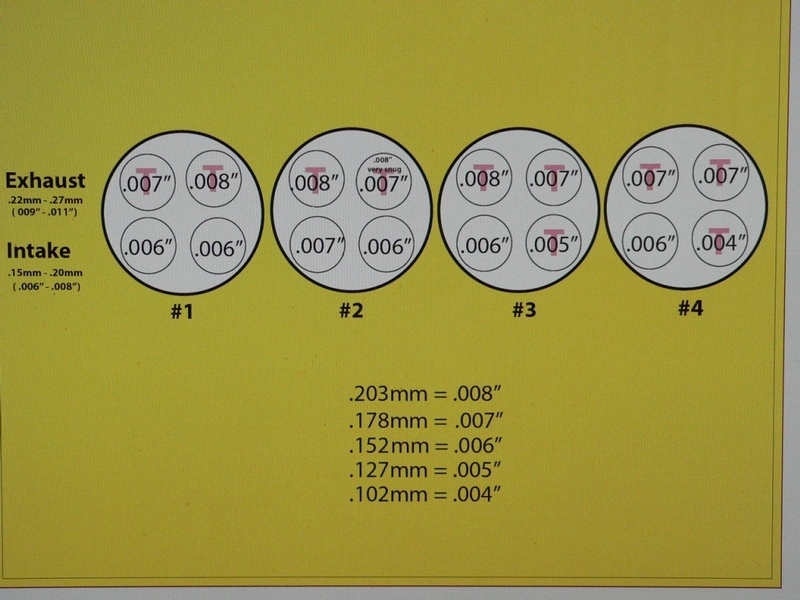
This is the same diagram as Diagram 4 except it is expressed in inch decimals. As you can see, the inch decimals on the feeler gauge are in round numbers which make comparing clearances easier to conceptualize and compare.
9. If any clearances require adjusting proceed with the following steps in order. If all clearances are in spec, skip to step 22 .
Valve Clearance Adjustment
Do First:
Do Valve Clearance Measurement, steps 1-8 above.
Remove the Camshafts
Tools:
magnet tool with flexible shaft
painters tape
8 mm socket
rag
screwdriver
drip pan
17 mm socket
gap thickness feeler gauge
micrometer
Materials and parts price
(qty according to amount needed) 9.48mm OD replacement shims
(Kawasaki part # varies according to shim thickness).................................10.12
Hot Cams shims are sold in refill packs of 3 from Denis Kirk and are much cheaper.
OEM replacement engine head cover gasket
(Kawasaki part # 11061-0738)...................................................................$33.20
(1)OEM sealant - Three Bond liquid gasket,
(Kawasaki Part # TB1216B: 92104-1064 )...................................................64.00
or GM Engine Sealant (Hub Recommended and much cheaper)
OEM head hole gaskets (Kawasaki part # 11061-0196) .............................6.92
(6)OEM head cover bolt washers - optional to replace................................. 3.82
(Kawasaki part #92055-0143)
(1 liter) A couple ounces of your usual engine oil...........................................5.00
Kawaski Parts House is one online source of OEM parts
Bike Bandit is another
10. Use a magnet tool with flexible shaft to remove each lifter. The magnet will both pull the lifter up and usually cause the shim to stick inside of the lifter. Take caution not to drop a shim in the head or timing chain tunnel. Place a piece of painters tape on each lifter and mark it for reinstallation. Indicate the lifter’s cylinder number, left or right side and exhaust or inlet valve. Fold a piece of painters tape over each shim and mark it with the same information. Mark each lifter and its shim as soon as it is removed. It is crucial to avoid inaccurate marking and mismatched parts. 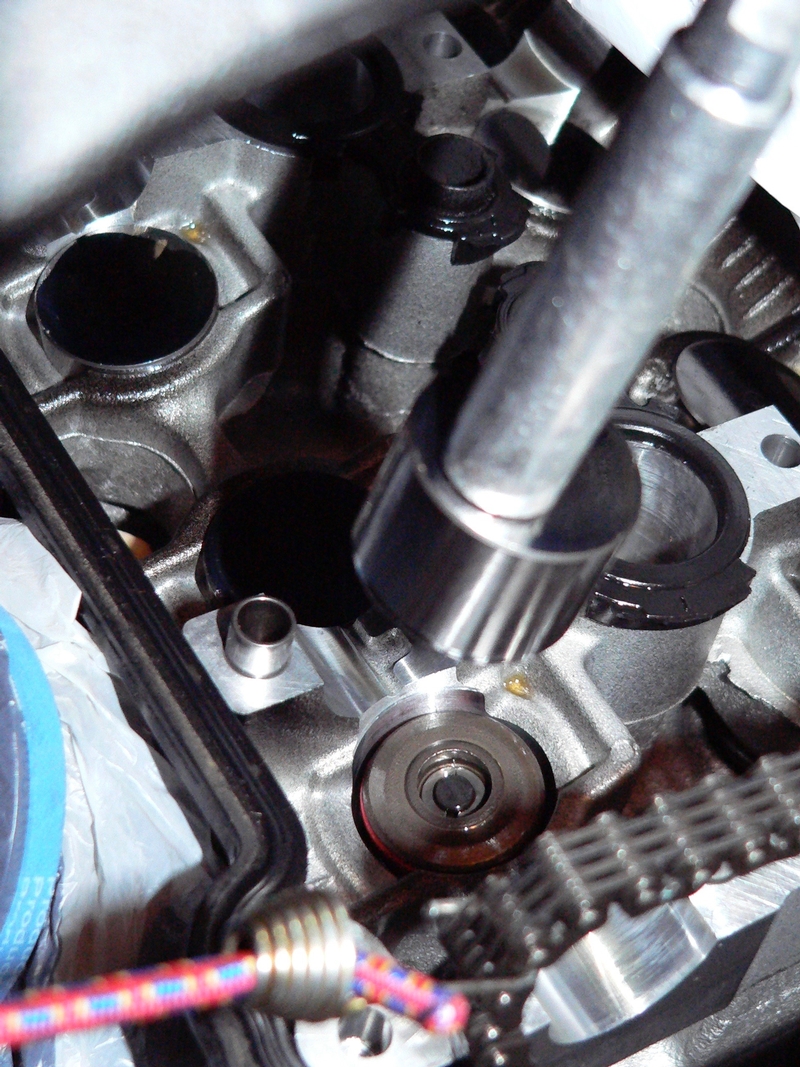
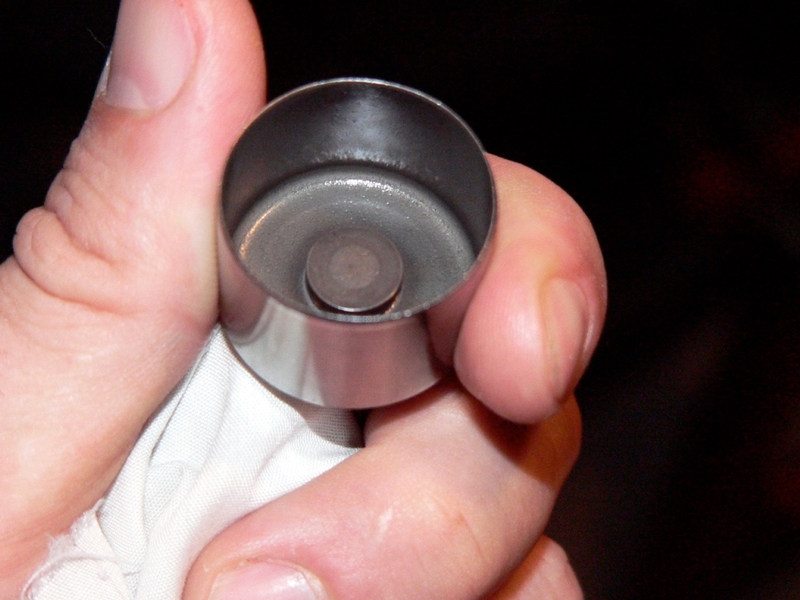
The shim will usually stick to the inside of the lifter. Be sure to mark the shims and the lifters as soon as they are removed so that they may be installed back to the same valve stem.
11. Remove the tape label from one shim. Use a micrometer to measure its thickness to the 1/1000”. Record the measurement of the shim thickness. I used the same sheets as those which I had recorded the clearances. Replace the tape label and proceed to measuring the next shim. Do all of the shims one at a time reaffixing the label after measuring to avoid mismatching.
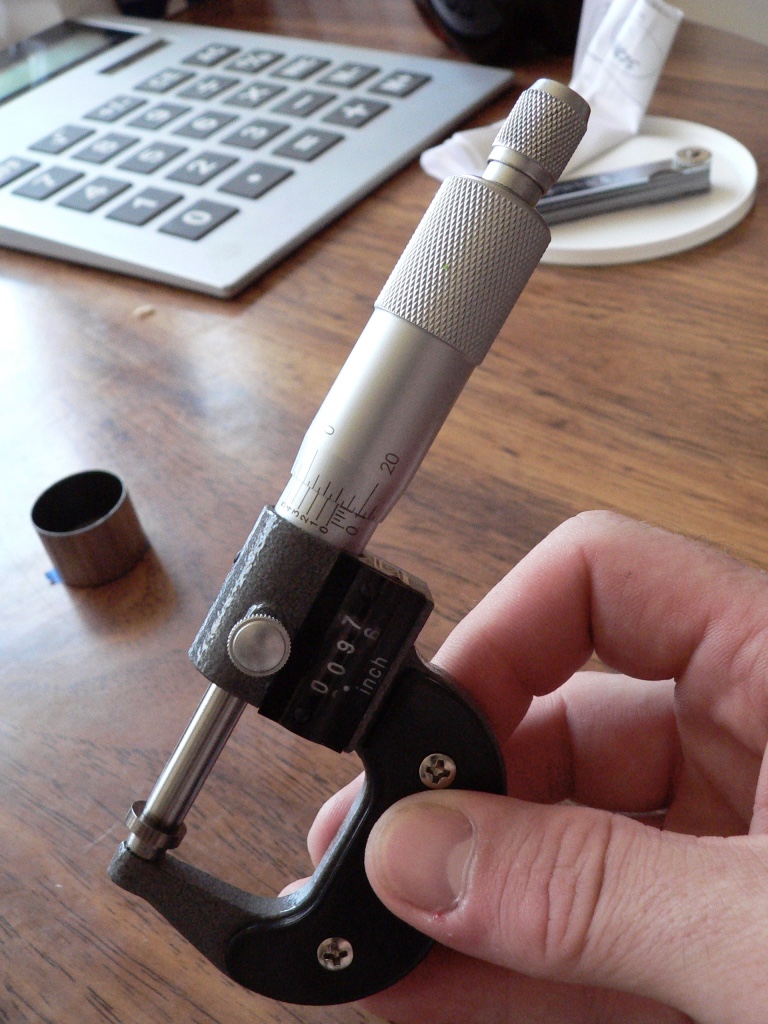
12. The next step is to determine what sized shims will be needed to produce the necessary adjustments to achieve valve clearances that fall within specced parameters. All that need be done is to use the tables below. There is a separate table for inlet valves and exhaust valves copied from the ZX-14 Service Manual. Cross reference the valve shim clearance that was measured with the feeler gauge (in the left vertical column marked “Valve Clearance Measurement”) with the shim thickness that was measured with the micrometer(in the row third from the top marked “Thickness ”). The number that is shown where the two intersect is the size of shim needed to produce an adjustment that will bring the clearance into spec.
Don’t forget, it is sometimes possible to swap over an out of spec shim from one valve in order to produce the proper adjustment in another valve. If you remove a shim that ends up being the right size for another valve clearance, might as well use it for that instead of buying a new one.
Exhaust - Valve Clearance Adjustment Chart 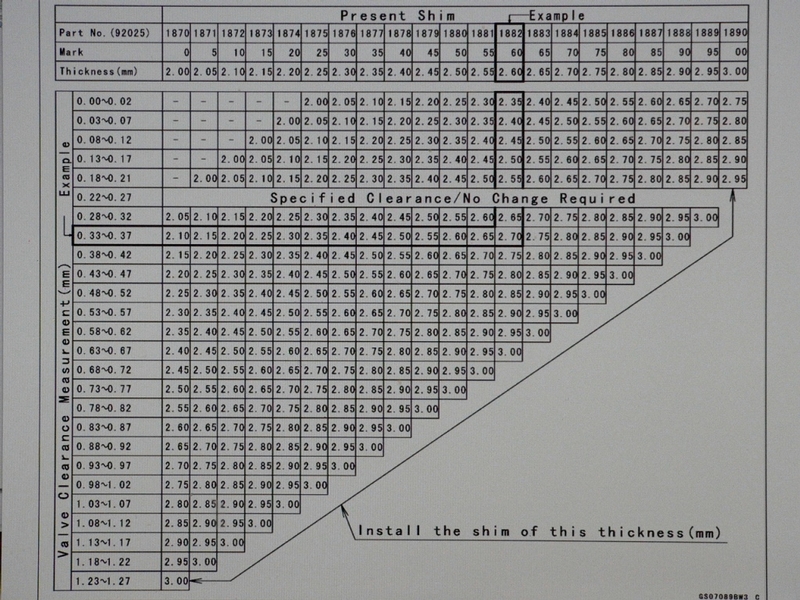
Inlet - Valve Shim Adjustment Chart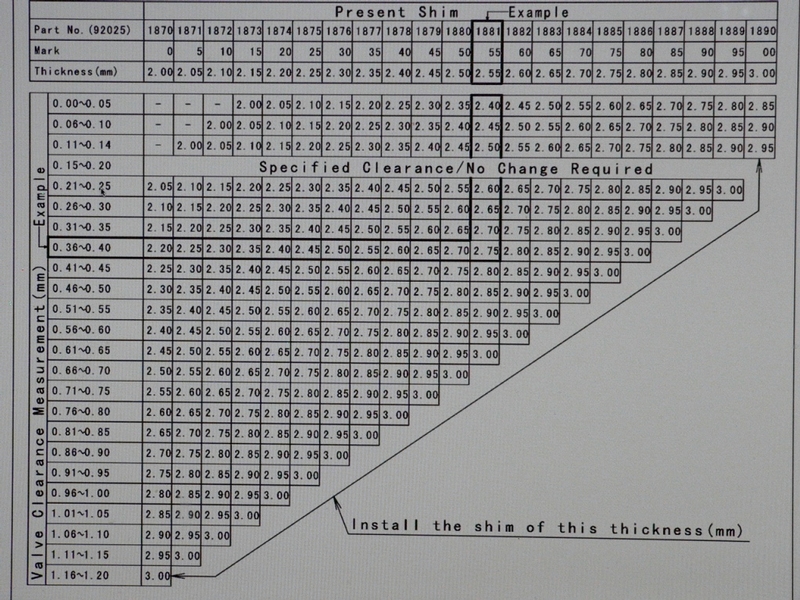
Using the charts above is a simple way of getting your clearances into the specced range (.22mm-27mm for exhaust, .15mm-.20mm for inlet). If you wish to adjust valves with extreme precision for some special purpose then you will need to calculate the ideal shim thickness for each valve clearance you wish to adjust. This is done through a simple sequence of addition and subtraction calculations.
Valve clearance becomes smaller with wear on the valve seat. Normally, the clearance you hope to achieve (ideal clearance) is greater than the clearance you actually have (present clearance). Therefore, you will be subtracting the present clearance from the desired clearance.
Step A
calculate difference between ideal clearance and present clearance
Ideal Valve Clearance (the exact clearance you wish to achieve)
.229mm
minus Present Valve Clearance (as measured by feeler gauge)
.178mm
equals the Difference between the present and the ideal clearance (the amount the valve clearance will need to be adjusted)
.051mm
.229mm
- .178mm
.051mm
Normally valve clearance gets tighter with wear. For this reason, you will be replacing the old shim with a thinner shim so the lifter will not ride as close to the cam. The valve clearance will be adjusted looser (larger). Because you will be using a new shim of less thickness, you will subtract the Difference in step A from the Thickness of the Present Shim to find the Ideal Thickness of the Replacement Shim. This is demonstrate below in Step B.
Step B
calculate the ideal thickness of the shim that will be used to replace the previous shim
The Thickness of the Present Shim 2.565 mm
(as measured with micrometer)
minus the Difference (from Step A) - .051 mm
----------------
equals the Ideal Thickness of the Replacement Shim 2.514 mm
Remember, the thickness you calculate for the replacement shim is “ideal.” All the new shims you order will not be the exact thickness to the hundreth of a millimeter as labeled. You will want to measure them before installing them. The thousandths decimal place will probably not make enough difference to affect precision clearance but the hundreth often does.
Further, it is unlikely that you will find a shim that is exactly the size you need. In that case, it is best to use a shim that will make your clearance larger than minimum spec rather than smaller. The clearance will always get smaller with wear. At some point, the exact clearance you were aiming to adjust to will happen through ordinary wear.
If for some reason you wish to reduce the valve clearance, you will want to replace the previous shim with a thicker one. You will need to add the Thickness of the Present Shim to the Difference in step B.
As I understand it, adjusting shims to create a clearance larger than maximum spec is unsafe. Extremely loose valve clearance could allow the shim to fly out of place which would result in catastrophic engine failure.
* Last updated by: Rook on 6/25/2018 @ 11:29 PM *

